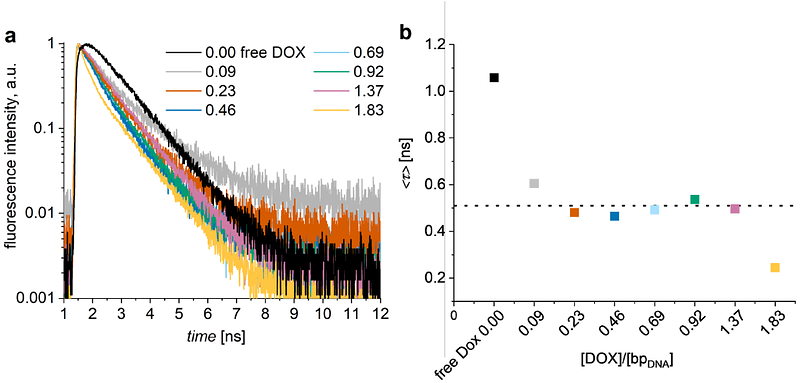Fluorescence Anisotropy Analysis of the Interaction between Doxorubicin and DNA Origami Nanostructures

Fluorescence Anisotropy Analysis of the Interaction between Doxorubicin and DNA Origami Nanostructures
Lisitsyna, E. S.; Klose, A.; Vuorimaa-Laukkanen, E.; Ijäs, H.; Lajunen, T.; Suhling, K.; Linko, V.; Laaksonen, T.
AbstractOwing to doxorubicin\'s high DNA binding affinity, doxorubicin-loaded DNA origami nanostructures (DOX-DONs) are promising nanocarriers against cancer. However, understanding the interactions between doxorubicin (DOX) and DNA origami nanostructures (DONs) is important to ensure the quality of DOX-DONs. This interaction is often taken for granted and the influence of DOX loading conditions is poorly characterized. Exploiting the inherent fluorescence of DOX, steady-state and time-resolved fluorescence anisotropy spectroscopy techniques are used for characterizing non-destructively the binding between DOX and DONs, and the purity of formed complexes. The difference in fluorescence anisotropy between free DOX and DOX-DONs confirms the DOX-DON complex formation. Further, at loading ratios of DOX to DNA base pairs >0.5, homo-Forster resonance energy transfer (homo-FRET) between closely packed DOX molecules is observed. Moreover, time-resolved anisotropy reveals DOX aggregation on DONs at high loading ratios >1. For loading ratios >0.1, spin-filtration to remove excess free DOX is efficient and necessary, though at loading ratios >1 some DOX aggregates remain attached to the DONs. In summary, fluorescence anisotropy analysis provides more detailed information and insight into DOX-DONs compared to regularly used fluorescence intensity-based characterization methods, and these results can help designing more efficient and safer DNA intercalator-based nanocarriers.


